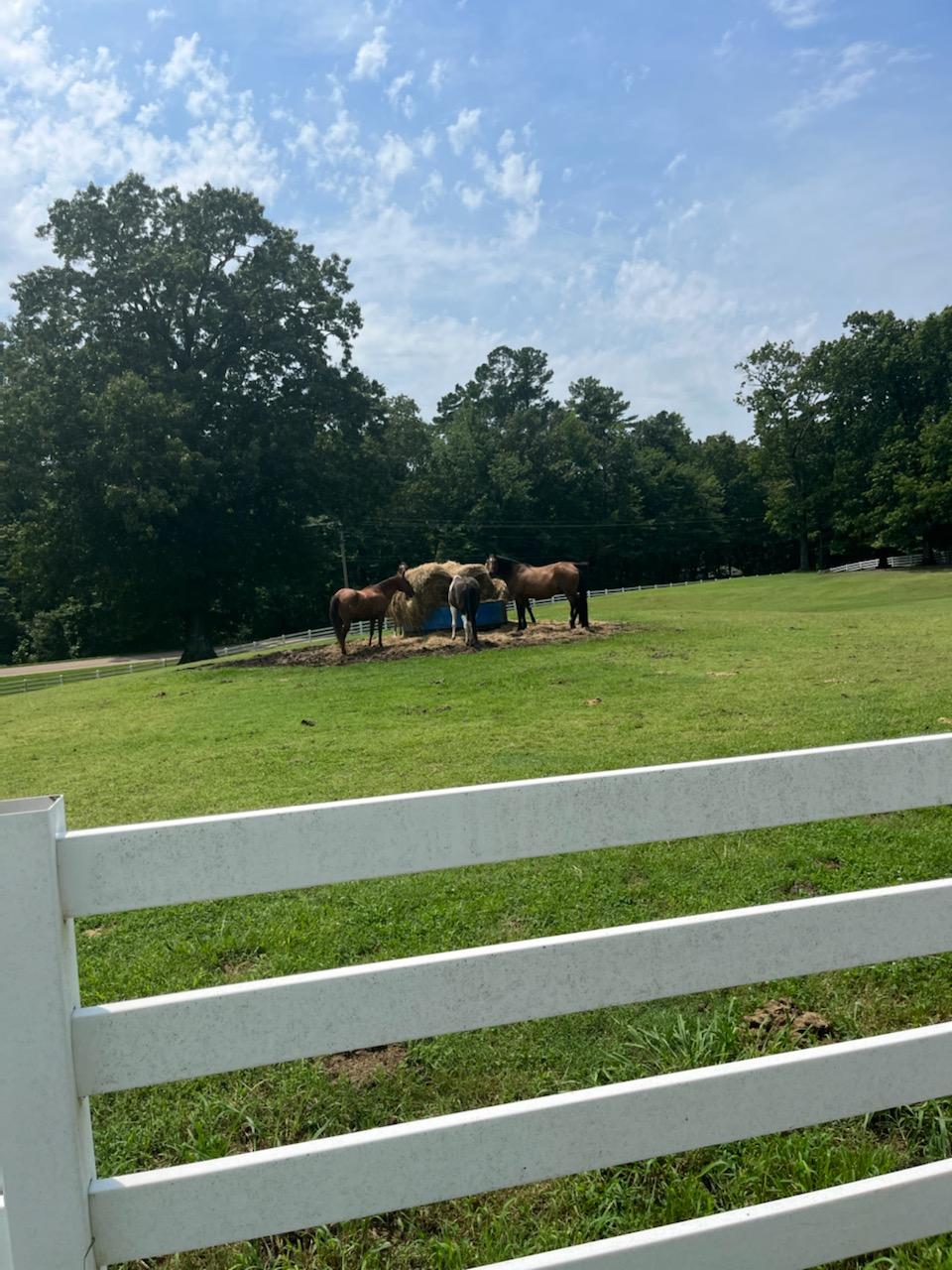
Bruce
Loan OfficerForum Replies Created
-
Bruce
MemberAugust 20, 2024 at 11:07 pm in reply to: HOW CAN I DELETE LATE PAYMENTS FROM CREDIT REPORTIt is possible to have recent late payments removed from your credit report, but doing so can be difficult. Here are some things you can do:
Write a goodwill letter.
What it is: A goodwill letter is a written request to your creditor asking them to remove the late payment from your credit report as an act of goodwill. This tactic works best when you have a good payment history with the creditor. The late payment was caused by something out of the ordinary.
How to write it: In this letter, explain why you paid late and point out that you’ve generally been punctual about paying on time. Also, please let them know you would delete this one late-payment blot from your credit bureau records for reasons other than its inaccurate negative information. This is what requesting such an action amounts to! Be polite but honest when making this type of appeal.
Dispute The Late Payment
How to Do It: If you think there’s been an error in reporting, dispute it with the bureaus (Equifax/Experian/Transunion). The bureaus will investigate by contacting the creditor. If they can’t verify or find no record of ever having received money and say, “This never happened,” then yes, this shall disappear like magic!
How to File a Dispute: You can file a dispute online, by mail, or by phone with each bureau. Include any documentation showing payment made on time. That proves otherwise, stating that these charges are false or completely wrong.
Negotiate With Creditor
Pay for deletion: Sometimes, collectors might agree to remove dings if the remaining balance is paid off and settled. It’s more often for the latest, but it’s worth a shot anyway, right?
How to Negotiate: Call the person with power over account status directly and offer a compromise where all parties win big. Ensure the agreement gets inked first!
Wait For The Late Payment To Age
Time-Based Removal: Late payments drop off credit reports seven years after being listed as delinquent. While they continue affecting scores for that duration under current scoring models, late payments eventually won’t show afterward. Therefore, be patient. Patience does pay here, too, sometimes!
Credit Repair Services: Beware. Some might be able to do things legally, but not others; don’t get scammed, please.
Avoid Future Late Payments
Automatic Payments: Set up automated payments on your accounts so you’re never late again.
Payment Reminders: Use an app or set calendar reminders to ensure that you always remember when each payment is due from now on.
Removing recent late pay can be hard work. However, it’s possible! It depends on how far away those pesky little black marks are in time. What caused them? Were there extenuating circumstances involved? Plus, remember, if it’s successful, this will make your credit score look better. Reach back out for more info or help anytime.
-
Here’s GCA FORUMS FACEBOOK PAGE
https://www.facebook.com/gcaforums?mibextid=ZbWKwL
-
This reply was modified 8 months, 1 week ago by
 Gustan Cho. Reason: Forgot image
Gustan Cho. Reason: Forgot image
facebook.com
Great Content Authority Forum. 5 suka · 3 membicarakan ini. Pusat Komunitas
-
This reply was modified 8 months, 1 week ago by
-
Bruce
MemberAugust 20, 2024 at 8:14 pm in reply to: CAN I GET TEXAS NMLS MLO LICENSE WITH A COLLECTION ACCOUNTGeorgia is nasty, too.
-
Nonconventional loans such as FHA, VA, and USDA can be securitized. Here’s how it works:
Securitization of Nonconventional Loans:
Securities guaranteed by the government: This means that they are either insured or guaranteed by federal agencies like FHA, VA, and USDA. These are government-backed mortgage loans pooled together and sold as mortgage-backed securities (MBS) in the secondary market.
Ginnie Mae: The Federal Housing Administration (FHA), Department of Veterans Affairs (VA), and U.S. Department of Agriculture (USDA) do not securitize non-conforming home mortgages themselves. Instead, they use Ginnie Mae to guarantee these securities for investors who purchase them from originators on an open-market basis.
Benefits of Securitization:
It enables lenders to be solvent by enabling them to sell their assets on the secondary market. This frees up capital that can then be used to create more credits. It also creates a liquid housing market.
The process helps keep rates low: The securitization process assists in spreading out the risk across many investors, hence maintaining lower interest rates for borrowers.
Process Overview:
Loan Origination: Lenders follow governmental guidelines when originating FHA, VA, or USDA Loan
Pooling of Loans Similar loans are grouped into a mortgage-backed security.
Ginnie Mae guarantees investors receive timely payments. This is because Ginnie Mae guarantees MBS.
Sale to Investors Secondary Market Purchase MBS provides lenders capital to originate more loans.
Ginnie Mae ensures liquidity within housing markets while making sure affordable financing options are available backed by these government-insured or guaranteed credits. These are commonly referred to as FHA/VA/USDA loan types. They are also nonconventional mortgages, which are often securitized through mechanisms. If you need further clarification, please let me know!
-
What are Compensating Factors?
Compensating factors are strong borrower factors that minimize the lender’s risk. Compensating factors play an important role in manual underwriting for mortgage applicants, and mortgage underwriters have much discretion in manual underwriting.
Compensating factors are positive features of a borrower’s financial record that counterbalance higher-risk aspects in a mortgage application, such as a high debt-to-income ratio or low credit score.
Importance in Mortgage Lending:
Compensating factors can help borrowers qualify for a mortgage they may not be approved for otherwise. Some common factors include:
- Considerable Cash Reserves.
- Stable Employment History.
- Large Down Payment.
- Low Payment Shock
Lenders use these factors to allow loans that do not meet standard guidelines but ensure the borrower has additional financial strengths.
Common Compensating Factors Recognized by Mortgage Lenders:
Substantial Cash Reserves: Having saved multiple months’ worth of mortgage payments.
Large Down Payment: Contributing a higher percentage towards the purchase price lowers lender risk.
Stable Employment History: Consistent and long-term employment.
Longevity and History of Promotion: Borrowers with a history of getting consistent raises and promotions are considered compensating factors. For example, if a person went from a security guard to a police officer and were promoted to sergeant, lieutenant, captain, major, colonel, and deputy chief, this would be considered a compensating factor.
Minimal Payment Shock: The new housing payment is similar to the current one.
Residual Income: Extra money left over after all bills have been paid.
Part-Time Job Not Used As Qualified Income: If a borrower has a second job, part-time income, or other income that has been seasoned for at least 12 months and not used as qualified income, that income will be considered a compensating factor.
Low Debt Utilization: Low balances on credit accounts.
No matter how weak certain sections of their application may appear. These compensating factors can help them secure one anyway.
-
Bruce
MemberAugust 18, 2024 at 9:16 pm in reply to: Debt-To-Income Ratio Guidelines on FHA and Conventional LoansHUD guidelines on debt-to-income ratio is 46.9% on for front-end DTI and 56.9% back-end debt-to-income ratio on automated underwriting system approved borrowers. HUD allows manual underwriting on FHA loans for borrowers who get a refer/eligible per automated underwriting system. Or high debt-to-income ratio borrowers with an approve/eligible can be down graded to a manual underwrite by the mortgage underwriter using underwriter discretion. On manual underwriting, the debt-to-income ratio is 31% front-end and 43% back-end with no compensating factor. 37% front-end and 47% back-end debt-to-income ratio with one compensating factor. 40% front-end and 50% back-end with two compensating factors. Mortgage underwriters can allow higher debt-to-income ratio than the above using underwriter discretion. Fannie Mae and Freddie Mac maximum debt-to-income ratio is 50% on conforming loans for borrowers with 700 credit scores and higher. Borrowers with under 700 credit scores, the maximum debt-to-income ratio on conventional loans is 45%. There is no front-end debt-to-income ratio on conventional loans.
-
What is a Mortgage Loan Application?
A mortgage loan application is complete when the lender has received six pieces of information:
- The applicant’s name
- Social Security Number (SSN)
- Income
- Property address
- Estimated value of the property and loan amount
Once these are provided, the lender must deliver a Loan Estimate.
Loan Estimate (LE)
The Loan Estimate is a 3-page form explaining your mortgage’s key terms and costs.
Rules & Regulations
Lenders must provide applicants with a Loan Estimate within three business days of their application. The LE includes specifics about interest rates, monthly payments, closing costs, and possible rate changes.
Process
Submission: Submit the required information.
Loan Estimate Issuance: Delivered within three business days.
Review & Shop: Compare offers before moving forward.
This process promotes transparency and lets you understand your options before committing to anything.
-
You were right to bring these up. The current housing market is tough for many potential buyers. Here are the points you made and what they mean:
Housing prices going up:
- Prices have doubled since 2019, which has made it much harder to afford them.
- This is not sustainable over time.
Mortgage rates being high:
- They’re at 7.5%, the highest they’ve been in a long time.
- So monthly payments are much more expensive.
- This reduces how much people can spend on houses.
Inflation being high:
- It’s eating away at what people can buy.
- Saving for a down payment is now even harder.
Homeowners insurance costs going up:
- They have increased by 500%, greatly contributing to owning a home.
- People don’t think about that when budgeting.
Property taxes increasing:
- These keep adding to what homeowners have to pay every year.
- It can hurt in places where homes are gaining value quickly.
What This Means For Home Buyers:
Affordability Crisis:
- Prices and rates have put most homes out of reach for average people.
- Compared with what we make, monthly payments on a typical house are higher than they’ve ever been
Should I wait or should I buy?:
- Buyers fear waiting too long and finding worse conditions.
- Or acting now only to see prices drop later.
- You might miss out, versus you might overpay.
The Market Is Changing Up:
- Some areas where values rose fastest are starting to cool off.
- More stuff is available than before in many parts of town.
Should I think long-term or short-term?:
- Short-term market changes aren’t a big deal if someone plans to live somewhere forever.
- But if they want in/out quickly, that’s riskier.
- Long-term buyers vs short-term buyers/investors.
Advice For Potential Home Buyers:
Assess Your Situation First Thing:
- Job stability, savings, plans.
- Rent vs buy in your area.
Don’t Overextend Yourself: Use the old 28-30% housing cost-to-income ratio. Remember, increased insurance and taxes, too.
Timing Is Key: Some experts think prices in certain cities might soon fall back down. That said, market timing is mostly luck-based.
Look At Everything: Check out what first-timer home programs you might qualify for. Consider fixer uppers/less competitive markets.
Be Ready For A Bargain: Get your financial life together so you can act on it immediately when the right place arises. This means having a good credit score and being pre-approved for a loan.
Think Long Term: If it will be your forever house, don’t worry too much about what happens today or tomorrow.
Also, consider living in them instead of treating homes like investments only.
Stay Sharp:
- Keep an eye on what houses nearby are selling for/how fast.
- Interest rates could change at any time.
- New laws could hit housing anytime, too.
- Stay woke.
- It’s worth remembering that all real estate is local.
- National trends matter, but every city and neighborhood has its happenings.
- Make sure to research where exactly you want to buy.
- Talk to people who work in those areas before deciding.
It’s hard right now, but this game will reward you if you come in correctly. It always does. Make sure whatever you’re doing makes sense based on who you are and what you want. Not because somebody told you they knew where the market was headed.
-
rMotgage lenders may use lender credit to help borrowers with their closing costs. This is what you need to know about them:
Definition: A lender credit is money the mortgage lender gives to pay for some or all of the borrower’s closing costs.
How it works: If you accept a higher interest rate on your mortgage, the lender agrees to cover part of your closing expenses. This means that while you’ll have lower upfront charges, monthly payments over the life of your loan will be more expensive.
Amount of credit: It can be anything from a few hundred dollars up to several thousand, depending on the size of the loan and the interest rate increase.
Interest rate trade-off: For every 0.25% your interest rate increases, expect around 1% of credit relative to the borrowing amount.
For example: On $200k borrowed at 3.5%, a 0.25% increase would give $2k in credits.
Benefits: Less money is required when finalizing the purchase. Assists people who are tight on cash but can handle slightly elevated monthly payments. This is especially helpful in hot markets where sellers like buyers with lower closing costs.
Considerations: Higher rates mean larger monthly sums paid out as well as more total interest across the loan lifetime. It is not ideal for those not intending to move from this property anytime soon.
Calculation example: Without lender credit:
Loan amount: $200,000
Interest rate: 3.5%
Monthly payment: $898
Closing costs: $5,000 (paid by borrower)
With lender credit:
Loan amount: $200,000
Interest rate: 3.75% (0.25% higher)
Monthly payment: $926 ($28 per month more)
Closing costs: $3,000 ($2,000 paid by lender)
When it’s most useful: When funds are low for closing.
In a seller’s market, reducing your closing costs strengthens the offer.
If you plan to sell or refinance within a few years.
How to get a lender credit: Ask the lender about credits.
Get offers from different lenders and compare.
Work out terms that give enough credit without sacrificing too much in rate.
Alternative to paying points: Lender credits are essentially the opposite of paying discount points
Instead of paying to lower your rate, you’re accepting a higher rate for upfront savings. Remember, choose what’s best for you based on how this fits into your financial situation, how long until the out date, and your ability to cover upfront costs. Always calculate eventual expenses versus immediate gains.

